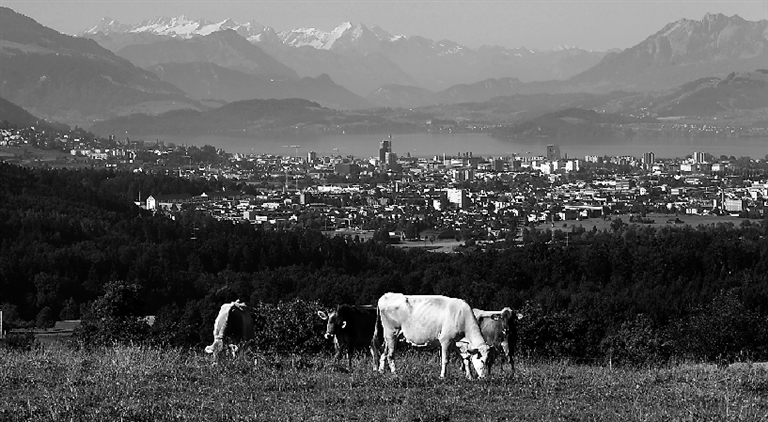
AS parched pastures force farmers across Europe to purchase expensive feed crops for their hungry herds, a Swiss dairy association may have part of the answer: smaller beasts. New Swiss Cow, a group advising about 100 farmers, is trying to reverse a 50-year-old push for bigger animals in Switzerland, which it says was based on the false premise they would boost economic output by producing more milk. While it’s true the livestock long favored by Swiss farmers churn out more milk, smaller cows do it more efficiently by using proportionately less feed and space, according to the association. They also require fewer visits from the vet than their genetically-enhanced cousins, New Swiss Cow said. “Cows bred for maximum milk output are more expensive than smaller cows, as they need more space in the shed, more fodder and are more prone to diseases,” said Michael Schwarzenberger of New Swiss Cow. Since the 1960s, Swiss cows have bulked up to as much as 800 kilograms by using semen from American bulls, some of which originally came from central Switzerland. Almost half the nation’s 537,000-strong dairy herd are fawn-spotted Simmental, which were crossbred with U.S. Red Holstein. That crossbreeding helped to more than double the average annual output per animal to 7,400 liters, according to the producers association Swiss Milk. Still, smaller animals of 500 to 600 kilograms can produce a proportionally greater 6,000 to 7,000 liters of milk, according to New Swiss Cow’s Martin Huber, who teaches at a farming institute in Salenstein, near Lake Constance. That rationale applies to other breeds of cow and beyond Switzerland’s borders, he said. However, in addition to the economics, there’s another reason big isn’t always beautiful in Switzerland, according to the country’s main farmers’ union. Lighter cows can more easily reach alpine pastures, said Sandra Helfenstein, a spokeswoman for the Swiss Farmers’ Union. (SD-Agencies) | 
